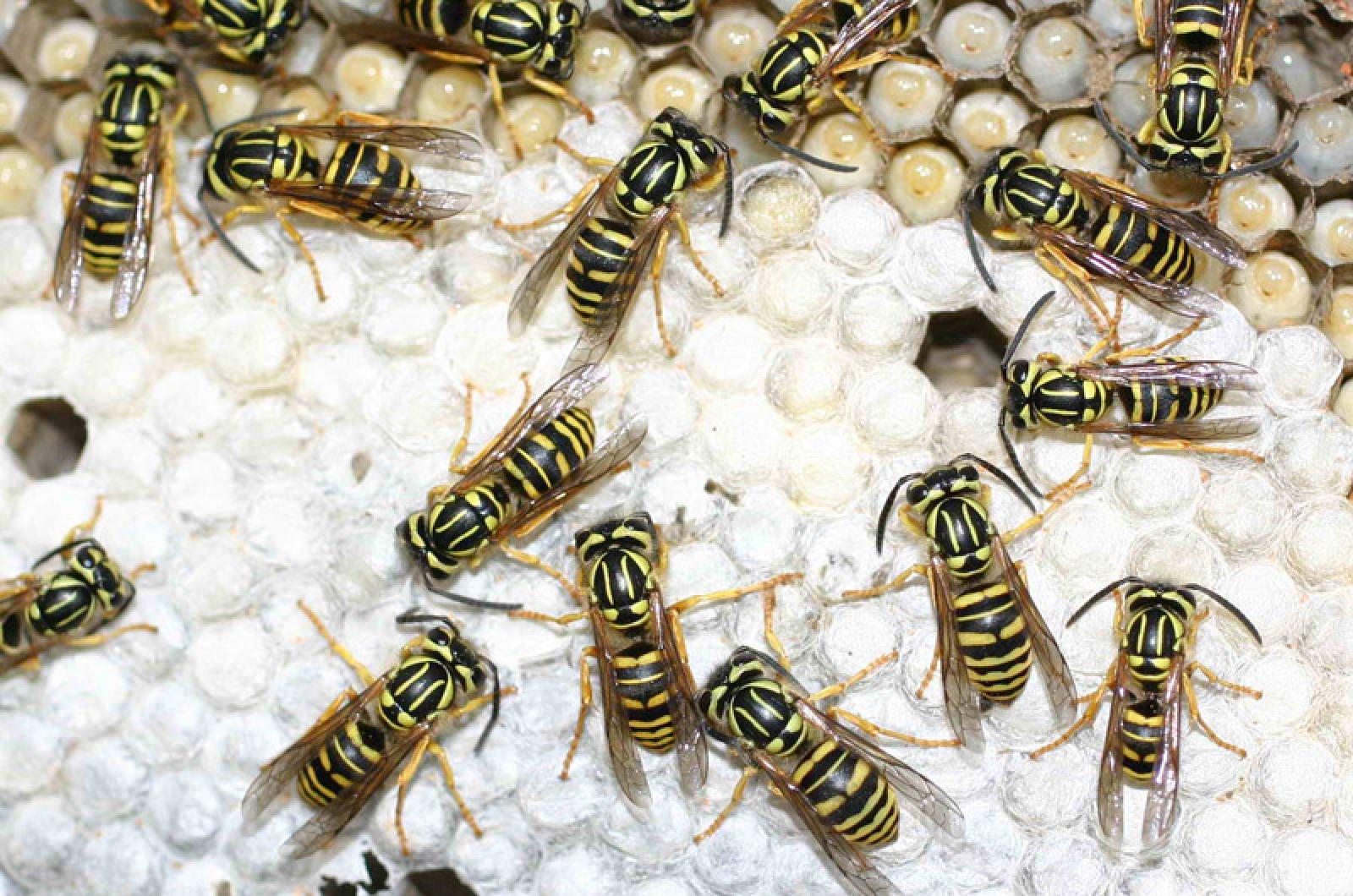William Shakespeare might not have been thinking of insects when he warned, “If I be waspish, best beware my sting.”
It would be very good advice to take literally. Wasps, especially yellow jackets, have been out in full force, and folks are certainly noticing and fearing the abundance of these little yellow and black beasts that frequent your picnic and cause panic among your guests.
A bee or not a bee? That is the question. Yellow jackets are not bees, they are wasps in the genus Vespula. Although quite often mistaken for bees, there are distinct differences between the two.
While you may not want to get too close, try to catch a glimpse of the insect’s body. Bees have hairy bodies and carry pollen on their legs. Yellow jackets lack that body hair and don’t transport pollen. Their landing pattern is also distinct. Yellow jackets have a rapid side-to-side flight pattern as they alight. You’re forgiven if you don’t notice that while you’re trying to swat them.
There is another difference, which makes it unsurprising that people panic in their presence. Unlike honeybees, which can only sting once, yellow jackets can sting again and again. And again.
Their sting is potent. The Schmidt Insect Sting Pain Index notes that the discomfort can last for 10 minutes and is a two out of four in terms of severity. Many of you may be able confirm this via first-hand experience.
But really, the yellow jackets aren’t malevolent, only protective of their little bit of real estate, hungry and very thirsty.
Drought conditions might be to blame for the surplus of stingers this summer. Yellow jackets can survive and even thrive during dry times, though the dearth of water can change their behavior.
Yellow jackets nest in the ground, in tree hollows, under bark and leaf litter, or in and around human structures. Rain can wash out these nest colonies thereby reducing their population, so without heavy rains, nests remain robust. And rainy days reduce active hunting, so clear skies are favorable for yellow jackets to be out and about.
The lack of water can cause other problems. Yellow jackets require moisture and will seek it in unwelcome places. Like you! Yes, your sweat is appealing to these parched insects and they will land on you to get that moisture which they use to regulate the temperature of their nests, among other things. When a stinging insect lands on us, most of us flail or similarly respond and are likely to get stung because of our erratic movements.
Been there, done that.
This summer’s heat has also not hindered yellow jackets, since they are even more active in hot weather due to their metabolism, a metabolism that is revved up by the high temperatures.
As colonial insects, a yellow jacket’s main instinct is devotion to the survival of the colony. To that end, they spend much of their flying time finding and transporting food back to their colony.
And they do so to obtain an interesting and variable diet. When feeding themselves, yellow jackets prefer sugar and carbohydrates, such as plant nectar, fruit and tree sap.
When they are most concerned with feeding their larvae back in the colony, they become carnivores, searching out proteins from insects, meat and fish. After consuming these items, they return to the nest to feed their larvae by regurgitating their meal. This feeding method, called trophallaxis, provides for excellent nourishment of the young, insuring survival of the colony.
With their great survival and numbers this summer, Shakespeare, though not an entomologist, might have given this advice from Lady Macbeth to those of us trying to avoid a sting. “Screw your courage to the sticking-place, and we will not fail.”
Suzan Bellincampi is director of the Felix Neck Wildlife Sanctuary in Edgartown, and author of Martha’s Vineyard: A Field Guide to Island Nature.







Comments
Comment policy »